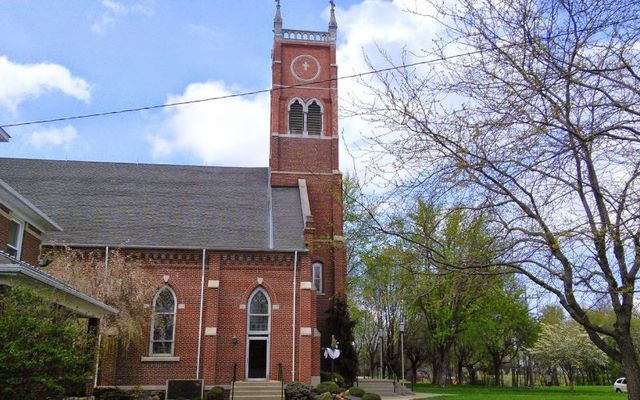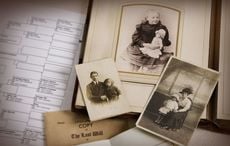In December 1816 a brave Irish immigrant bought some land in Indiana from the United States government. That land eventually became the hamlet of Ireland.
John Stewart is known to have been the sole founder of the tiny town called Ireland, located in southwest Indiana, but little about his origins is known. Ireland, which is in Dubois County and near the city of Jasper, is a small town with a population of just 19 recorded in 2000.
On December 23, 1816, an Irishman named John Stewart purchased the town’s land from the US government and named his new holding American City. Stewart was loyal to his new homeland, but he soon realized that there was another town with the same name and so the name was changed to Ireland, in honor of the land of his birth.
Stewart died in 1842 and it was his son James, who, along with four others, planned and established the settlement. The town’s first map was dated May 20, 1865.
Before the Stewarts made their mark the area was settled predominantly by the Scots-Irish, according to the Ireland, Indiana Historical Society. The land was completely wooded and the emigrants made their living clearing the land and organizing the county. These pioneers came from Virginia, Pennsylvania, and North Carolina to tame the wild forests. The area was known as “The Irish Settlement.”
The first person to settle the area was named Jonathan Walker. On June 15, 1814, Walker claimed land near the western edge of Madison Township in Dubois County. His land was in four different counties, Knox, Gibson, Pike, and finally Dubois County. Walker, a veteran of the War of 1812, was one of the prominent characters of the early days.
Today's town of Ireland is an outgrowth of this first Irish Settlement.
John Stewart and his brother Robert had come from Virginia to settle in Indiana, according to an interview with Elijah Stewart, the founder’s grandson.
According to their grandson, they were born in Ireland. When they were young men they came through the Cumberland Gap into Kentucky, and from there on to Indiana. The brothers married two sisters – John married Jane Green and Robert married Mary Green.
John’s military records, from the War of 1812, show that he was in the US Mounted Rangers in St. Charles County, Missouri, and was wounded in battle. His particular mounted rangers were once commanded by Daniel M. Boone, the son of US folklore hero Daniel Boone.
John was discharged from service in 1815 and shortly after he returned to Indiana.
His brother, Robert, had a gun shop in the settlement and was also the first coroner of Dubois County, serving from 1818 to 1820.
After John Stewart bought and established Ireland, Indiana, he built a mansion on his land. It’s said that he modeled the home on that of Daniel M. Boone, his former commander, in Missouri. The mansion is described as two log cabins, ten feet apart, with one roof covering both homes.
Stewart died in the fall of 1842.
According to the historical society’s records:
The Stewart log school was built around 1820.
The first known "stick home" (other than a log cabin) in the village was built by Harvey Green in 1839.
The second home was that of Dr. E. A. Glezen, Ireland's first doctor in 1846. The home also served as his office for over 50 years.
The town was known as the “garden spot of Dubois County” and by 1870 it had a population of 139. During the mid-1800s a large number of Germans settled there and they eventually became the predominant grouping in the area.
However, the Irish history of the town is still recognized. In 1982 the first St. Patrick’s Day Parade was held in the town, although it was discontinued 20 years later in 2002.
St. Patrick's Day weekend is still celebrated in the town and in 2009 a dedicated committee was founded and a parade and other events were held to honor the Irish heritage of the town.
Several homes in the town were destroyed in February 2017 when Ireland was hit by a tornado outbreak.
If you live in or know of a city, town, or even a street with a distinctly Irish name and history, let us know in the comment section! There’s so much Irish influence to be explored.
*Originally published in 2015. Updated in November 2023.




Comments